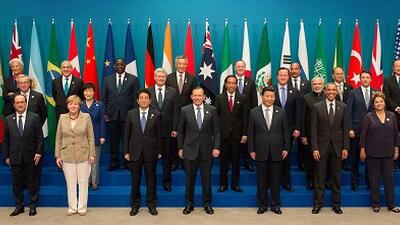New Drivers of Global Value Chains
The long-term impact of the changing trade landscape on global value chains is being shaped by changes in standards regimes, exchange rates, investment flows and other key determinants such as climate change. While trading with fast-growing emerging economies such as China, India and Brazil will become increasingly important, the question remains as to whether this will create export opportunities for other developing countries or merely divert trade away from the Organisation for Economic Co-operation and Development (OECD) countries towards the emerging economies.
The Proliferation of Standards
Across the OECD countries, there has been a proliferation of standards across three families of standards, including:
1. Private sector standards
2. Governmental regulation
3. Responses to voluntary civil society initiatives.
Private sector standards are at the core of business-to-business operations. Without them global value chains simply cannot function. Driven by buyers, they lay down detailed product specification and required key performance indicators, such as zero-defect components, to be achieved by suppliers, as well as their subcontractors. The number of private standards is bound to increase. In its 2010 flagship report on Market Access, Transparency and Fairness in Global Trade, ITC calls for greater transparency in private standards to ensure that these do not become burdensome barriers to trade, especially for developing country exporters.
Governmental standards primarily reflect concerns about health and safety. Emerging economies are likely to adopt regimes similar to those in OECD countries in the short to medium term. Therefore, any strategy by developing country exporters to supply substandard products to emerging economies is likely to be risky and short-lived. But process standards, for example about traceability, may be less onerous, enabling new export opportunities.
Voluntary standards requirements are likely to be less restrictive in emerging markets even for high-margin market segments such as organic foods or timber products. While OECD countries are increasingly adopting detailed process standards, this is less likely to be the case in the emerging and the so-called ‘Next Eleven’ economies.
In summary, newly emerging markets will operate with less specific standards, creating new outlets and opportunities for trade expansion among exporters in developing countries.
Exchange RatesCurrency realignments, notably a weaker United States dollar and a relatively stronger Chinese yen and Indian rupee, may provide competitive advantages for exporters from other developing countries.
Other developing country exporters may find it somewhat easier to compete with, for example, China and India in third markets. With stronger currencies, the import demand in the emerging economies will increase. By sourcing globally in a cost-effective manner, the emerging economies will seek to remain competitive. These factors will create new trade opportunities.
A comparatively weaker US dollar will also reduce incentives for US-based enterprises to outsource operations to skills-rich countries like India and the Philippines, meaning that the offshoring of services may slow down. Furthermore, US-based companies will seek to compete more aggressively in third markets, in accordance with the export drive announced by US President Obama in his 2010 State of the Union statement. These factors will increase competition for developing country exporters.
Most developing countries seek to align their currencies with the US dollar owing to its widespread use for international trade contracts. From a developing country perspective, a weaker dollar is akin to a stronger euro (or Japanese yen, Swiss franc, etc.), in that these are the countries successfully supplying equipment and technology across the developing world. Therefore, a strengthening of these currencies is, unfortunately, often associated with higher import costs and terms of trade losses for developing countries.
In summary, the outcomes of currency realignments for developing country exporters will remain highly uncertain with both likely gains in market share and terms of trade losses.
Investment FlowsOutward investment flows from OECD countries are expected to remain feeble in the context of slow growth and significant exchange rate volatility. But the rapid expansion of outward investment among emerging economies may be a silver lining.
Furthermore, these countries are increasingly ‘vacating’ markets due to rapidly increasing wage costs and are typically offshoring labour-intensive production. Some estimates indicate that China alone will be moving out of low-end textile markets worth US$ 30 billion a year, enabling trade expansion from others such as Bangladesh, Cambodia and Viet Nam.
Other Key FactorsThe growing concern about the environmental impact of CO2 emissions due to long-distance transport and high energy prices are among the other key factors at work, meaning that global companies will search for less dispersed supply chains. This will favour countries geographically close to ‘growth poles’ such as South-East Asia, China, Central America and the United States.
To sum up, it is entirely plausible that the new trade expansion – driven by more and widely differentiated consumers – will dominate the risk of trade diversion. But the slow demand from traditional OECD markets, coupled with intensifying competition, means there will inevitably be both winners and losers.










